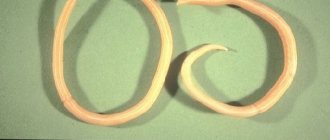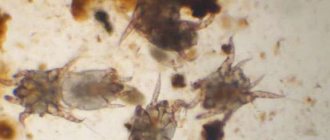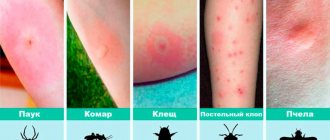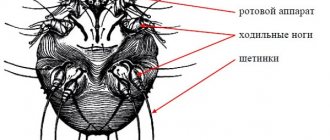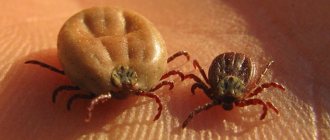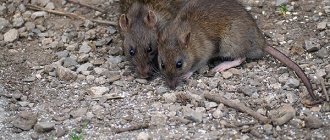Among the many parasites found in domestic animals, the leaders are helminths in the intestines. Roundworms in cats are a common and dangerous phenomenon because the worms do not immediately detect their presence. “Tenants” of the gastrointestinal tract bring a lot of trouble to animals and their owners, and this is a reason to understand this issue more deeply.
Roundworms in cats: symptoms and treatment
What are roundworms and what do they look like?
Roundworms that parasitize cats are roundworms that vary in size and gender. They live most often in the intestines, but are sometimes found in the pancreas, gall bladder, and other organs.
Appearance of cat roundworm
Three species of roundworms parasitize the digestive tract of domestic cats, and all of them are classified as representatives of the nematode suborder Ascaridata of the genus Ascaris. The pathology caused by the presence of nematodes in the body of cats is called toxocariasis.
The causative agents of toxocariasis differ morphologically and also externally.
Table 1. Types of roundworms
| Name | Appearance Features |
Toxocara cati | Light yellow worms, the males of which are up to 5 cm in length, and the females are twice as large. The eggs are brown, spherical in shape, with a thick and rough wall. Their sizes are up to 65×75 microns |
| Toxocara leonina | Yellow helminths, from 6 to 10 cm in length. Eggs are smooth, thick-walled, oval or round, with a diameter of up to 80 microns |
Toxacara canis | Large gray-yellow worms with a length of 94 to 18 cm. In males, the tail is curved. The parasite lays eggs of a round shape, gray in color, in which the cellularity is clearly visible |
How dangerous is ascariasis for cats?
Roundworms in cats cause the chronic disease toxocariasis. In principle, even the name “roundworms” for roundworms that parasitize the body of cats and dogs is not entirely accurate. Toxocara leonina, Toxocara mystax, Toxacara catti live in the intestines of cats and dogs. You can see how they look in the photo. These parasites belong to the general suborder of roundworms (nematodes) Ascaridata of the genus Ascaris. It has been clinically proven that roundworms in cats and dogs cannot cause helminthic infestation in humans.
Ascariasis in cats. Dog or cat roundworm eggs will not be able to develop in the human body, even if they are purposefully “planted” there. This is due to the fact that human roundworm develops in the intestines at a temperature of 36.6 degrees, and roundworms of cats and dogs develop at a temperature of 38.5 - 39 degrees.
A person can become infected with other worms from animals, so pets need to undergo a full course of deworming once every 3 months, and if a helminthic infestation is diagnosed, they need adequate treatment.
The life cycle of helminths as a mechanism for the development of toxocariasis
On average, a month passes from the release of the parasite egg to its sexual maturity. During this time, a larva is born, which soon grows into an adult and, in turn, begins to reproduce, releasing a huge number of eggs.
Toxocara cati
For these intestinal worms, cats act as definitive hosts. At the intermediate stage, parasites live in the bodies of mice, chickens, beetles and earthworms, where they do not spend a full life cycle, but only survive a certain period. It is believed that vectors play the role of a “vehicle”.
Long-term presence of parasites in a cat’s body disables its internal organs.
The main part of the life of Toxocara cati takes place in the body of a cat. The eggs laid by the parasite enter the digestive tract of the small predator, where larvae (0.31 - 0.42 mm in length) emerge from them. Through the intestinal walls they enter the bloodstream, which spreads this infection throughout the body. Such migration causes problems with the functioning of the organs and systems of the host animal.
Toxocara cati eggs
Localized in the respiratory system, the larvae are released from there with sputum, but are swallowed again, after which they re-enter the gastrointestinal tract and settle there. In the cavity of the small intestine, the worm forms into a sexually mature individual.
In one day, the female Toxocara cati releases a colossal number of eggs, which enter the external environment with the host’s feces. 1 g of feces from a sick animal contains more than 100 thousand “containers” with future parasites.
Toxacara canis
Parasites of this type are typical for dogs, but are often found in cats. A visual representation of the life cycle of the nematode Toxacara canis is provided by the example of eggs entering the body of a pregnant cat. The animal receives them from contaminated food. Once in the digestive system, they eventually penetrate the blood and spread throughout the body, affecting organs and tissues.
Egg of Toxacara canis
Hormones secreted in the body of a pregnant cat stimulate the active growth of larvae. Later, some of them are localized in the uterus and mammary gland tissues, while others continue to live and develop in the intestines of the female.
Kittens born from a mother infected with worms inevitably inherit them.
Worms that infect the uterus penetrate the kittens’ body long before they are born, and transform into sexually mature helminths when the kitten is half a month old. Cat offspring can get Toxocara canis through mother's milk, through licking by the mother cat, as well as through contact with her fur where there are traces of feces with helminth eggs. As for the female, she becomes infected for the second time when licking kittens.
Through licking, both the kitten and the cat exchange parasites again
Worms and their larvae can infect the liver and lungs, causing dysfunction of these organs. Some individuals continue their life activities in the digestive tract. They actively reproduce, destroying the host’s body. From time to time, helminths and their eggs are excreted in the feces, where they remain until they enter the body of a new host.
Toxocara leonina
This type of parasite is characterized by having the simplest life cycle among roundworms. Larvae emerge from eggs swallowed by a cat and grow in the small intestine.
Toxocara leonina eggs
Adult Toxocara leonina lay eggs, which are excreted from the host in feces. Once in the gastrointestinal tract of the following animals, they give birth to larvae, and everything repeats all over again.
Hunting for mice is fraught with infection by parasites
Mice can be carriers of helminths. Larvae emerge from the eggs that find themselves in the digestive tract of rodents. When a furry predator eats such a mouse, the worms enter the cat's intestines, where their development continues.
Development cycle of Toxocara
The full development cycle of Toxocara sometimes takes several years and goes through several stages.
Stage 1. With the dog's feces, the eggs are released into the environment, more often into the soil, where they continue to develop. But they will become infectious only after an average of 20 to 30 days. Until this time, the egg is a spherical blastomere without a larva inside.
Within a month, the infected feces are broken down and the eggs appear on the soil surface. Withstanding the most unfavorable conditions, they are able to exist for several years until they penetrate the body of an intermediate host or are directly swallowed by a dog.
The role of intermediate hosts is played by small rodents, cockroaches, earthworms, livestock and humans.
Stage 2. In the stomach of the animal, the egg shell dissolves and the larva emerges. Through the intestinal wall it enters the general bloodstream, from where it migrates to the liver and remains there for 1-2 days.
After this, passing through the right heart, it penetrates the lungs and trachea. This type of migration is called hepatopulmonary. During the migration process, the larva undergoes its first molt.
But some larvae are characterized by a somatic type of migration - directly into the pulmonary vein. Such situations arise when a dog swallows a large number of eggs at the same time.
In this case, the larvae form into a cyst (encapsulate), and in this state they are able to exist in most internal organs, including the central nervous system, from several weeks to several months.
Stage 3. After the next stage of maturation, the larva leaves the cyst and moves with the bloodstream to the lungs, trachea and larynx. In a dog, this movement provokes a cough, due to which the larvae end up in the mouth, are re-swallowed and thus enter the intestines.
Stage 4. The last stage of molting occurs in the intestine, after which the larva becomes sexually mature.
What is ascariasis?
This is a parasitic infestation caused by the penetration of larvae and subsequent damage to internal organs by adult worms. When implying infection of a dog, it is correct to use the term toxocariasis.
Danger to humans
Nematodes that infect cats are also dangerous to humans. The degree of harm from their exposure largely depends on the state of the immune system, but in any case, their presence in the body does not pass without leaving a trace.
No matter how homely and sterile your pet is, you should not forget about the rules of hygiene
Infection occurs through the entry of helminth eggs from a pet into the owner’s mouth, and then into his gastrointestinal tract. This can happen if the owner does not wash his hands after:
- stroked a sick animal;
- empty the contents of the tray;
- touched the animal's bowls and toys;
- let the cat lick his hands.
The closer your relationship with your pet, the higher the risk of one day becoming infected with parasites.
In addition, the risk of invasion is high when a person:
- allows the pet to lick its face;
- kisses an animal;
- finishes food that the cat sniffed from her hands (touched with her nose, lips or tongue), but did not eat.
Toxocariasis is especially dangerous for people with weakened immune systems: patients, children and the elderly. In severe cases, helminthic infestation causes death.
Roundworms behave differently in the human body: some can travel throughout the body in the bloodstream, others remain in the gastrointestinal tract, but in any case they cause enormous harm to the body. The products of the activity of worms are toxins, which, when they enter the blood, disrupt the functioning of organs and systems.
Symptoms of poisoning are the most harmless manifestations that an infected host will encounter
Symptoms of toxocariasis infection in humans include:
- digestive disorders (nausea, vomiting, diarrhea);
- increased body temperature;
- blurred vision (when the eyes are affected);
- itching in the anal area, often at night.
If all this occurs, you need to consult a doctor and undergo an examination.
Who are roundworms?
Ascaris is one of the largest parasitic worms; it belongs to the Roundworm type.
Within 2.5-3 months, the female reaches a length of 24-44 cm. She has an elongated tail end, equipped with a conical appendage and two large papillae (suction cups) on the inside of the body. Males reach a length of 15-25 cm.
The tail end of the male is curved in the form of a hook. At the head end there is a mouth opening surrounded by three large cuticular lips (suction cups). Fertilized oval-shaped eggs have a size of 0.04-0.05 mm. Inside the egg is a dark germ cell. Unfertilized eggs are larger and filled with light yolk cells.
Regardless of the presence of males, the female lays up to 200 thousand (!) eggs, fertilized or unfertilized, in the intestine every day. The eggs are released into the soil through human feces.
Eggs can survive in soil for up to 20 years or more. At high humidity, larvae develop in them to the stage of invasiveness (the ability to penetrate and develop in humans), which corresponds to an age from 24 days to several months.
The disease caused by roundworms is called ascariasis. The average incidence of the disease in the world population is about 100 million cases per year. The main mechanism of infection is fecal-oral, through the ingestion of eggs with unwashed vegetables and fruits, as well as other food (through unwashed hands). Flies also contribute to the contamination of food products to a certain extent.
Signs of roundworms in cats
In order not to miss toxocariasis in a pet, the owner must be attentive to its well-being and condition. There is a list of signs by which one can suspect a helminthic infestation in a beloved cat:
- decreased activity of the animal - it sleeps a lot or lies motionless;
- growth and development delay in young animals;
- dull and falling out fur;
- thinness against the backdrop of a “brutal” appetite;
- periodic indifference to food;
- disproportionately large abdominal volume, as with bloating;
- worm eggs on the animal’s “pants” and around the anus, which is most noticeable when the fur is long and dark;
- pale tint of mucous membranes is one of the signs of anemia;
- vomiting and diarrhea, sometimes with blood and worms;
- persistent itching in the anal area, which causes anxiety in the animal and leads to the cat aggressively licking the anus.
The most obvious sign of roundworms in a cat is frequent licking of the anus.
It is important to distinguish the symptoms of roundworm infection from the symptoms of poisoning in time, since the initial stages of helminth infection cause a similar reaction in the body.
When the invasion is extensive, the following may be observed:
- cough as a symptom of respiratory damage;
- narrowing of the intestinal lumen, which leads to constipation;
- obstructive jaundice caused by liver dysfunction. It appears as a yellow tint to the oral mucosa.
In kittens, even moderate helminthiasis causes noticeable changes in appearance, but in adults, thinness and a round belly may not be so noticeable, especially when the cat is long-haired. But disorders associated with disruption of the digestive tract always appear.
An inadequate increase in appetite is an alarming sign for the owner
Timely treatment of an animal is an opportunity to restore its health and prolong its life. The owner's indifferent attitude towards his cat will most likely end in the death of the pet and infection of the owner, as well as other family members. Even if therapy is started late, sometimes it is possible to save animals, but kittens, pregnant cats, as well as old and weakened animals, as a rule, do not survive.
Methods of infection
Roundworms are very tenacious parasites that live almost everywhere. This is one of the most common types of parasites, so if an owner is wondering whether his cat might have roundworms, the answer will always be positive.
Even a cat that has never left the apartment or been outside can become infected with this disease.
A pet easily becomes infected with parasites from its relatives. The fur of cats infected with certain types of roundworms always contains a lot of their eggs, which quickly infect other animals and humans.
If the owner was in a house where a cat infected with parasites lives, there is a considerable chance of bringing roundworm eggs to his pet on his clothes or hands. In some cases, you can even bring parasite eggs from the street on your shoes.
Often infection occurs with food; for example, larvae can survive on a piece of meat that has not been cooked long enough. For cats walking outside, the risk of getting sick is even greater - rodents are often carriers of toxocariasis.
Kittens become infected with the disease from their mother, and toxocariasis is especially dangerous for them.
Fleas not only bring discomfort to cats, but also carry the eggs of parasites, including roundworms.
Roundworms and their eggs can be found anywhere in the world because they are resistant to different climatic conditions. For cats, the main source of toxocariasis is their infected relatives, who release feces containing eggs into the environment.
Such eggs move very easily and quickly in space, so they can be found anywhere: on pieces of furniture, in the soil, on the clothes of the owners, etc. The largest number of eggs is present on the coat of cats, where they fall during licking and firmly adhere to the fur.
The most common routes of infection are:
- insufficiently cooked food products (meat, liver, fish, bones);
- roundworms swallowed together with small rodents (mice or rats) or with insects (fleas, grasshoppers, flies);
- dirty, undisinfected palms of people, their clothes or shoes, which are rubbed or licked by pets;
- contacts with other cats and female cats during exhibitions or matings;
- randomly picked up objects and food particles on the street;
- intrauterine infection during pregnancy, when the larvae penetrate the placental membranes and colonize the body of developing kittens.
We suggest you read: Anti-scabies remedy for cats
The last type of infection has the most serious consequences, which can lead to irreversible consequences in the first months after the birth of kittens: severe intoxication, blockage of intestinal loops and rapid death. Often, the greater intensity of infestation in kittens leads to balls of roundworms breaking through the thin walls of the intestine, after which peritonitis develops.
How to diagnose the presence of roundworms?
To do this, it is necessary to submit a sample of the animal’s feces for analysis three times, at intervals of 10 days. Diagnostics will take almost a month, but it is necessary, since a single collection of biomaterial can show signs of mild infection, while within twenty days from the first visit to the veterinary clinic the next generation of helminths will “hatch”. Feces for research are delivered to the laboratory by the owner of the animal in special containers.
Bloating in a cat infected with roundworms
If a significant amount of parasites is suspected in the digestive tract, an ultrasound of the abdominal organs is performed. Among other things, this allows you to assess intestinal permeability and the condition of the biliary tract. Sometimes, instead of an ultrasound, X-rays using barium contrast are done.
The sooner the owner detects a disease in the cat, the higher the chance of saving it.
When there are signs of the presence of roundworms not (or not only) in the intestinal tract, the animal is prescribed a blood and urine test, as well as an ultrasound of the relevant organs. Based on the diagnostic results, treatment is prescribed.
Symptoms and diagnosis of the disease
The official name of the disease is toxocariasis, which is caused by roundworms called roundworms.
Toxocara leonine - worms are white with a yellow tint and grow up to ten centimeters. Mature females lay eggs, which after a few days are excreted from the cat’s body along with feces. This type of roundworm is not dangerous for humans.
Toxocara mystax can grow up to twenty centimeters, with females several times longer than males. The eggs of these worms can migrate throughout the animal’s body, damaging other organs; eggs can often be found in the mouth and saliva. This type of roundworm is quite contagious, and even humans can catch it.
Toxocara catti is the largest representative of roundworms, has a thicker body, and grows up to twenty centimeters in length.
It is difficult to diagnose the appearance of parasites immediately after infection, since their eggs are not visible in the feces of cats. If adult individuals are visible in the stool, it means that the pet’s body has been infected for a long time and there are a lot of parasites.
Of course, it is very unpleasant to find such a find in your pet’s litter box, so it is better to identify the disease at earlier stages, paying attention to the following signs:
- Lethargy
- Sudden changes in appetite: the pet has become very gluttonous or, conversely, refuses to eat.
- Bloating
- The pet often suffers from gastrointestinal problems: diarrhea, vomiting, constipation.
- Watery eyes and allergy symptoms
- Pale mucous membranes, hair becomes dull and falls out
- Itching in the anal area - the cat constantly licks under its tail or makes characteristic movements on the carpet to relieve discomfort.
Of course, this does not mean that the pet should show all these symptoms at once, but even the presence of several of them will be a reason to contact the veterinarian.
To definitely diagnose the presence of roundworm in a cat, it is necessary to have the animal’s feces tested three times within three weeks, since one test may not detect parasites.
We suggest you familiarize yourself with: Ointment for the treatment of otodectosis
The causative agents of toxocariasis can be three types of roundworms:
- Toxocara leonina. The worms are creamy-white in color, up to 10 cm in adulthood. Their fully formed eggs can be released in the feces within 3-6 days and penetrate into new hosts.
- Toxocara mystax. The worms are light yellow in color and up to 18 cm in length. From the intestines they migrate throughout the body and, upon reaching the oral cavity, are re-swallowed.
- Toxacara catti. They are similar to small earthworms, but do not have rings on their body. The largest representatives of Toxocara, which grow up to 20 cm, migrate through the bloodstream until they settle in the liver for a year, where their growth and development occur. Once formed, they enter the trachea and are re-swallowed.
All these worms are large nematodes. These are round dioecious helminths that parasitize primarily in the gastrointestinal tract of cats. In appearance, they resemble laces made of white or yellowish fabric of medium size.
At the first stages of infection, only ascaris eggs are present in the animal’s feces. But it is impossible to see them with the naked eye. When the disease continues for a long time, adult sexually mature individuals begin to pass excrement, which are easy to notice due to their large size. The surface of their body is smooth and shiny.
Despite the fact that they can live in different organs of the animal, reproduction occurs only in the gastrointestinal tract.
Diagnosing and identifying roundworms can be a challenge even for an experienced veterinarian. Based on external signs and symptoms, the doctor can only assume that the cat has toxocariasis, after which the turn of diagnostic tests comes. First of all, a scatological examination of stool is carried out to identify eggs.
In order to be sure of the result, the veterinarian must obtain the data three times, so samples are submitted for analysis at least 3 times at intervals of a week. This is necessary because a negative result may be a sign of a stage of infection in which there are no mature roundworms in the cat’s body yet or the female did not excrete eggs at the time of stool collection.
To detect parasites, you need to adhere to the following rules:
- collect the sample in the morning, when the number of eggs in feces is maximum;
- deliver the analysis to the laboratory in the shortest possible time, and if this is not possible, then a hermetically sealed container with the sample should be placed in the refrigerator until the owner can go to the veterinary clinic.
Clinical tests to identify helminths are rarely prescribed; most often they prefer to immediately use drug deworming. After taking special medications, in 90% of cases it is possible to determine whether helminths have parasitized the cat’s body, since dead individuals are excreted in feces and become clearly visible.
How to treat your pet?
For therapy, highly effective antiparasitic drugs are used, which not only get rid of adult worms, but also destroy the larvae. It is important that the medications are not dangerous for the cats themselves, and some are even approved for use in kittens in the first month of life. The following products are especially popular among veterinarians and animal owners:
"Kaniquantel plus"
These tablets smell and taste like meat and are considered one of the best anthelmintic drugs. They allow you to fight several types of intestinal worms simultaneously and have a minimum of side effects.
Thanks to its smell, “Kaniquantel plus” is easily eaten by cats
It is important that it is not difficult to “persuade” your pet to eat the medicine - cats take such tablets as a treat and gobble them up with pleasure. For maximum effect of the drug, a single dose is sufficient. The tablets are approved for the treatment of kittens that are 3 weeks old.
"Milbemax"
Another combined anthelmintic drug, which has meat “signs” that are pleasant for cats, greatly facilitates the use of the drug. Milbemax is sold in tablets with different concentrations of the active substance. This allows you to choose the best option taking into account the age and weight of the animal.
Side effects of Milbemax are minimal and disappear within 24 hours
For babies six weeks of age, with a body weight of 500 g, and adolescent animals, “Milbemax for kittens and young cats” is indicated. For older people there is “Milbemax for adults”. Calculating the permissible amount of the drug is not difficult thanks to the simple and detailed instructions for the drug.
Important! Despite the fact that the medicine is usually well tolerated by cats, in some cases trembling of the limbs and general lethargy may occur.
"Prasitel"
An excellent remedy for toxocariasis, approved for use in animals 3 weeks of age. Babies are given a suspension, and for adults Prazitel is released in tablet form.
A single dose of Prazitel is usually enough for a cat to recover
You should feed the medicine to your pet once, adding it to your favorite treat, usual food or drinking water. In case of advanced toxocariasis, it is recommended to take Prazitel again 10 days later.
"Drontal"
An anti-worm remedy that allows you to get rid of nematode parasites (roundworms) and taeniasis (tapeworms). Prescribed at the rate of 1 tablet per 4 kg of animal weight. It is recommended to give the medicine to your pet once, during morning feeding, with its usual food.
Before using Drontal, it is advisable to consult a veterinarian, since intolerance is possible.
If the animal does not have a history of hypersensitivity to the components of the drug, then taking it in recommended doses does not cause side effects.
"Dironet"
Dironet is a line of anthelmintic drugs for cats and dogs. Sold in the form of tablets and suspensions, separately for each type of animal. Effective against round and tape parasites. Additionally, they are available: “Dironet Junior” for kittens, as well as a drug with a brand name in the form of drops for application to the withers. The suspension smells like fresh salmon and is used in a dosage of 1 ml per 1 kg of cat’s body weight.
Important! Each of the Dironet tablets is designed for 10 kg of pet weight, therefore Dironet in the form of tablets is recommended exclusively for adult cats of large breeds (for example, Maine Coons).
Dironet may not be suitable for breeds with small dimensions and low weight
In cases where the cat completely refuses to swallow the tablets, they are sometimes replaced with external drops such as Stronghold. Such drugs act more slowly, their concentration in the digestive tract will be less compared to tablets and suspensions.
Stronghold drops are suitable for uncooperative cats, but you should be prepared for the fact that their effect is less than that of tablets
For this reason, it is better to use drops when it comes to the prevention and treatment of helminthic infestation in the initial period. When it comes to a large-scale parasite attack, it is better to choose medications administered orally (through the mouth).
Regardless of whether your pet has had roundworms, it is advisable to periodically disinfect your cat’s accessories.
During treatment, care must be taken to ensure that all household items used by the cat are disinfected:
- bowls for food and water;
- pet tray and toys.
In addition, it is recommended to periodically use antiseptic solutions during wet cleaning of premises. If there are other cats and dogs in the family, you will also have to check them for the presence of worms and, if necessary, treat them.
Video - Antihelminthic treatment of cats
Traditional methods of treating roundworms
There are also traditional methods for removing roundworms from a cat’s body. It should immediately be pointed out that medications are more effective and more accurate than decoctions. Traditional medicine is a last resort that can be resorted to if there is no better way out. The composition and methods of preparing herbal remedies that fight worms can be read below.
Alternative Treatments
Treatment
Getting rid of roundworms is currently carried out in one way - by taking special medications. Most of them are very strong drugs, so it is not recommended to use them thoughtlessly. Each medicine has its own side effects and is selected according to the age, condition and physiological characteristics of the cat.
Most medications used for helminths have a complex effect: they help against various parasites - flatworms, roundworms, fleas and ticks. Modern medications do not require a special diet or the simultaneous use of laxatives. The correct dosage is selected based on individual characteristics, and this responsibility rests with the veterinarian.
The most well-known preparations in the form of ointments or drops that are applied to the withers area, where the cat cannot lick them:
- "Helmintal K" is an effective remedy for roundworms for cats weighing more than 4 kg;
- “Prasicide” - suitable not only for adult animals, but also for young cats from 6 months;
- "Prasitel" - used in the case of pregnant animals and kittens in the first month of life.
The elimination period of these drugs is about 25 days, during which they manage to eliminate several generations of roundworms from the body.
For those who prefer tablets, you can also choose the appropriate remedy:
- "Kaniquantel Plus" - has an attractive smell for cats, so it is easy to use;
- "Dirofen Plus" - its use is not permissible during the first 1.5 months of pregnancy;
- "Drontal" is a fast-acting drug, but it cannot be used for kittens under 6 months and for pregnant cats;
- "Milbemax" is a complex product for one-time use.
You can also use drugs for periodic deworming, which is recommended once every 3 months.
Possible complications of the disease
Inadequate therapy or complete lack of treatment will inevitably lead to the death of the animal, since the consequences of a helminthic attack weaken the body and make the animal unviable, because:
- over time, malfunctions occur in the functioning of all organs and systems;
- metabolism is disrupted;
- the increasing volume of worms narrows the lumen of the digestive tract, which is dangerous due to complete obstruction and rupture of the intestine;
- waste products of parasites cause severe intoxication of the body;
- immunity decreases, and a weakened animal becomes susceptible to any disease;
- the cat experiences an acute nutritional deficiency, since food is actually processed by parasites and used by them to ensure their own vital functions. As a result, the animal does not receive the required amount of protein, vitamins and microelements.
We should not forget that an animal infected with worms is a carrier of infection, which means that people and pets living with a sick cat are at risk.
Remember that even neglected roundworms can often be cured, the main thing is the desire of the owner
Unfortunately, there are owners who prefer to solve the problem in a radical way, trying to get rid of the animal. On this occasion I would like to say the following:
- firstly, an animal with extensive helminthic infestation is the result of the owner’s oversight and his negligent attitude towards the pet;
- secondly, helminthiases, including toxocariasis, are treatable;
- thirdly, the cost of the drugs is not high and is quite affordable even for those animal owners who have modest incomes.
Can you get roundworms from a cat?
Man acts as an intermediate host. The larvae do not complete their development in the human body, but they are able to migrate to the eyes, central nervous system, liver, lungs and heart. In these places, worms are susceptible to encapsulation.
Toxarosis is most dangerous for children. In severe cases, it ends in death. The main symptoms of infection are high fever, vomiting and diarrhea. Sometimes there is decreased vision or anorexia.
Prevention of roundworms in cats
Preventive measures to minimize helminthic infestations in cats include observing the following rules:
- You should not feed your animal raw, unfrozen meat and fish;
- It is important to monitor the cleanliness of cat accessories: bowls, tray, toys and bedding, treating them with household antiseptic solutions from time to time;
- Do not allow animals to walk on their own, so they have less risk of eating a sick mouse and “making friends” with unhealthy stray animals;
- Maintain cleanliness in the home, including promptly removing traces of dirty street shoes from the floor;
- Do not forget about periodic deworming of animals. Anthelmintic drugs should be given:
- quarterly if the cat visits the street;
- 1-2 times a year, when the pet is a homebody;
- when the pet first appears in the house, if the kitten comes from the yard and is more than 3 months old.
Prevention should be carried out both for cats that are outdoors and for cats who are stay-at-home cats.
It is advisable to carry out planned deworming:
- one and a half weeks before vaccination;
- two weeks before mating;
- 3 weeks before the expected cat birth.
Let your cat know that traveling around the table is unacceptable.
Equally important are measures to prevent helminthiasis in humans. In the early stages of helminthic infestation in an animal, it is not always possible to recognize it, therefore:
- every time after tactile contact with your beloved cat or its accessories, you should wash your hands with soap;
- The pet should not be allowed to wander around the table and eat leftovers from the owner’s plates.
- all family members need to take anthelmintic drugs 1-2 times a year;
- If signs of intestinal worm infection appear, you should contact an infectious disease specialist, and if there is no such specialist in the clinic, contact your local physician.
By the way! Frequent forays of a cat onto the table may indicate malnutrition. A well-fed and well-mannered cat, as a rule, does not jump on the table.
Paying attention to your own health and the well-being of your pet will help you avoid unnecessary worries and extend the years of your beloved cat’s life.
Prevention
- The easiest way is to prevent infection, because then you won’t have to fight roundworms. Therefore, once every 2-3 months you need to deworm your pet with special preparations. Before this procedure, it is important to consult with an experienced veterinarian.
- Always inspect your pet and occasionally remove its feces. After all, this is the only way to be sure whether your pet is infected with parasites or not.
To avoid many problems, you should make it a habit to wash your hands thoroughly with soap after handling pets. Good health to you and your furry!


